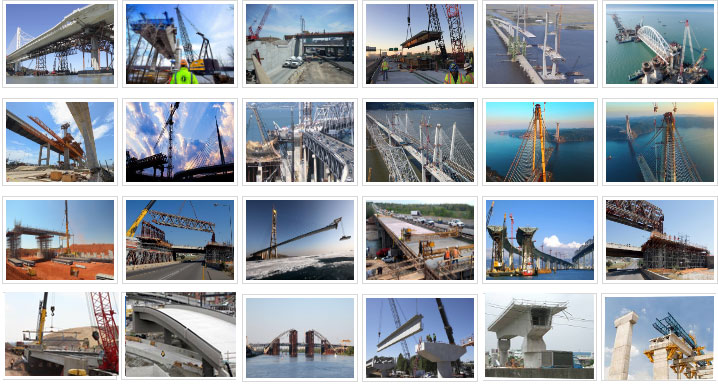
Importance of steel as bridge Construction Material
In bridge construction, commonly used materials are stones, timber and steel, and in recent times reinforced and pre-stressed concrete. As special materials, aluminum and its alloys and some types of plastics are also utilized. These materials contain various types of strength, workability, durability and resistance against corrosion. There are basic differences in terms of their structure, texture and color or in the possibilities of surface treatment with diverse texture and color.
Steel is considered one of the most vital elements of any bridge. Given below, some exclusive features of steel for bridge construction.
Steel: Steel contains the greater and most beneficial strength qualities, and it is therefore ideal for the most complicated bridges with the lengthiest extents.
Normal building steel contains compressive and tensile strengths of 370 N/mm2, about ten times the compressive strength of a medium concrete and a hundred times its tensile strength. Most powerful feature of steel is its ductility because of which it deforms substantially prior to break, sine it starts to yield over a definite stress level.
In bridges, high strength steel is mostly used. When, the strength is raised, the proportional difference among the yield strength and the tensile strength will be less, and it signifies that high strength will not be as ductile as those having normal strength.
The fatigue strength is not increased in proportion to the tensile strength. So, there should be adequate knowledge about the behavior of these special steels prior to utilize them.
For building purposes, steel is fabricated by means of plates (6 to 80mm thick) in terms of rolling when red hot. Cast steel is suitable for bearings and some other items. Some special types of steels exist for members under tension only, like ropes or cables, which are prepared in different ways to construct bold suspension or cable-stayed bridges.
The high strengths of steel contribute to small cross-sections of beams or girders and consequently a low dead load of the structure exists. It is possible to construct the light-weight "orthotropic plate" steel decks for roadways, which are frequently used containing an asphalt wearing course, 60 to 80 mm thick.
Plain steel plate, strengthened with cells or rlbs, builds the chord of both the transverse cross girders and the longitudinal main-girders. At the same time it functions as a wind girder. This bridge deck becomes popular due to it?s mechanized welding.
The plate girder construction is now gaining popularity, in which big thin steel plates should be reinforced against buckling. Now-a-days, all stiffeners are arranged on the inside in order to attain a smooth exterior surface without amassing dust or dirt deposits that contain humidity and bring corrosion. Stiffeners on the exterior, restore the plate-faces, provide scale and make the girder to be appeared as less heavy.
The trusses also provide support to the material properties of steel. Very delicate looking bridges are constructed by attaching slender steel sections jointly to build a truss. With welding, it is possible to fabricate hollow sections and attach devoid of applying the big gusset plates. In this way smooth looking trusses are obtained lacking the "unrest" that happens by attaching two or four profiles of rolled section with lattice or plates. A protective paint is applied to the exposed steel surface to safeguard against corrosion.
Aluminum is seldom applied for bridges and the same form was utilized as for steel girders. Aluminum profiles are fabricated with the extrusion process which facilitates several varied hollow shapes to be produced, in order that aluminum structures are more attractive than those of steel. Aluminum profiles are suitable for bridge parapets since no protective paint is required.


